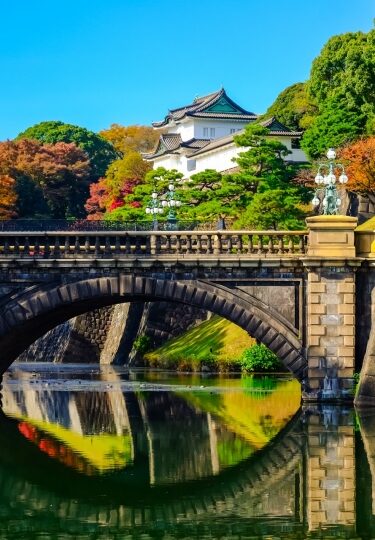The best time to visit Tokyo is fall, when temperatures ease, and the city’s foliage looks spectacular.
Tokyo is wonderful at any time of year, but its weather can make a big difference to your comfort. The subtropical climate brings very humid summers, sudden snowstorms in winters, and rainy springs.
Visiting Tokyo By Season
Summer
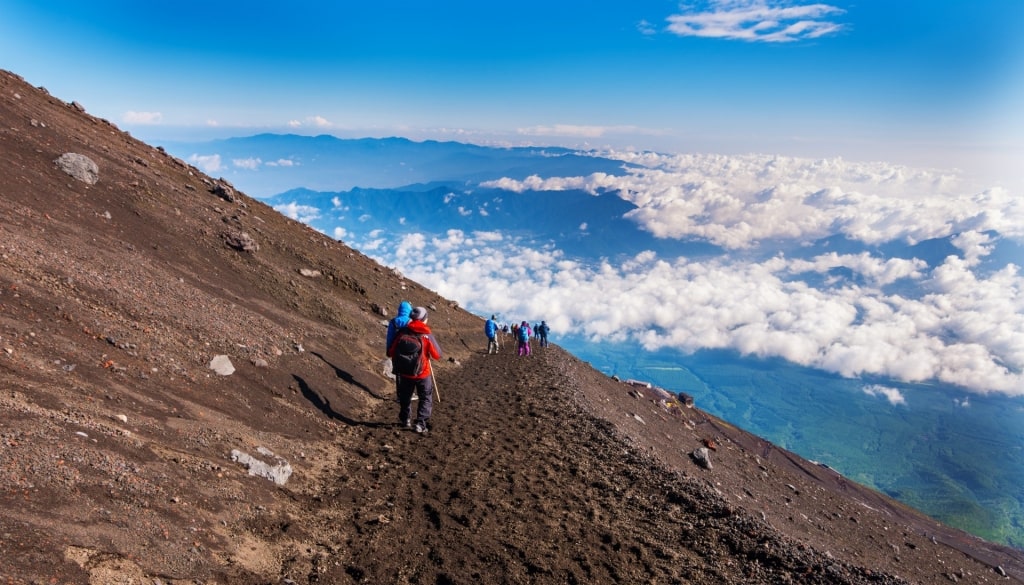
Mt. Fuji
From late June to the end of August, summer means hot, humid weather in Tokyo. Temperatures hit the high 70s and 80s, eased by rains in June through July. You’ll be grateful for every air-conditioned shopping mall or restaurant.
If you like the outdoors, and can soak up the humidity, this is when Mt. Fuji’s hiking routes open, and walkers join pilgrims for the ascent. When clear skies arrive later in July, it’s time for dramatic firework festivals, including the massive Sumida-gawa Fireworks in Asakusa.
August, the hottest month, is marked by the Buddhist Obon “Festival of the Dead”. This national holiday means trains are busy with people going home to honor their ancestors. The mood is very different for the Asakusa Samba Carnival, which attracts samba fans onto the streets in heat-appropriate skimpy clothing.
Fall
As the humidity of summer drops away, temperatures drop slowly. September’s average is 73°F (23°C), dropping to 63°F (18°C) in October, making fall the best time to go to Tokyo. September through October still brings rain showers, however, so you need to be prepared. Evenings are also cool enough to need an extra layer.
The autumn equinox in September—the time of harvest festivals—brings everyone out at night for moon viewing. Called Tsukimi, you’ll see this harvest festival celebrated by groups of family or friends in temples, and shrines with special Japanese foods.
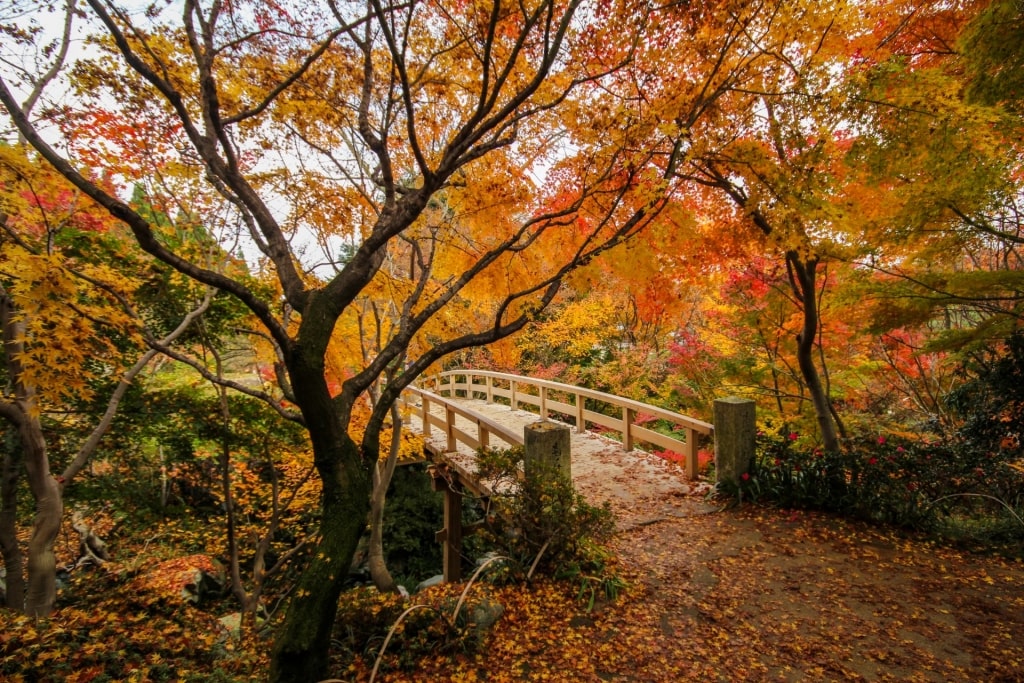
Sankeien Garden
The autumn foliage is another major draw, creating perfect vistas for photographers at various major sights. Chrysanthemums also bloom in October, to be greeted with their own festival in Tokyo’s gardens, shrines, and temples.
Another highlight is November’s Jidai Matsuri (Festival of the Ages), when people parade in traditional costumes from different eras.
Read: Why Visit Japan in the Fall
Winter
From late December through February, the weather starts to fall from the mid-50s into high 40s, and much colder at night. By February, you can expect lows into the 30s, and flurries of snow; the average temperature now is 43°F (6°C).
A key event is the New Year, celebrated with a three-day festival that packs hotel rooms, and everywhere else, and closes many major sights.
Spring
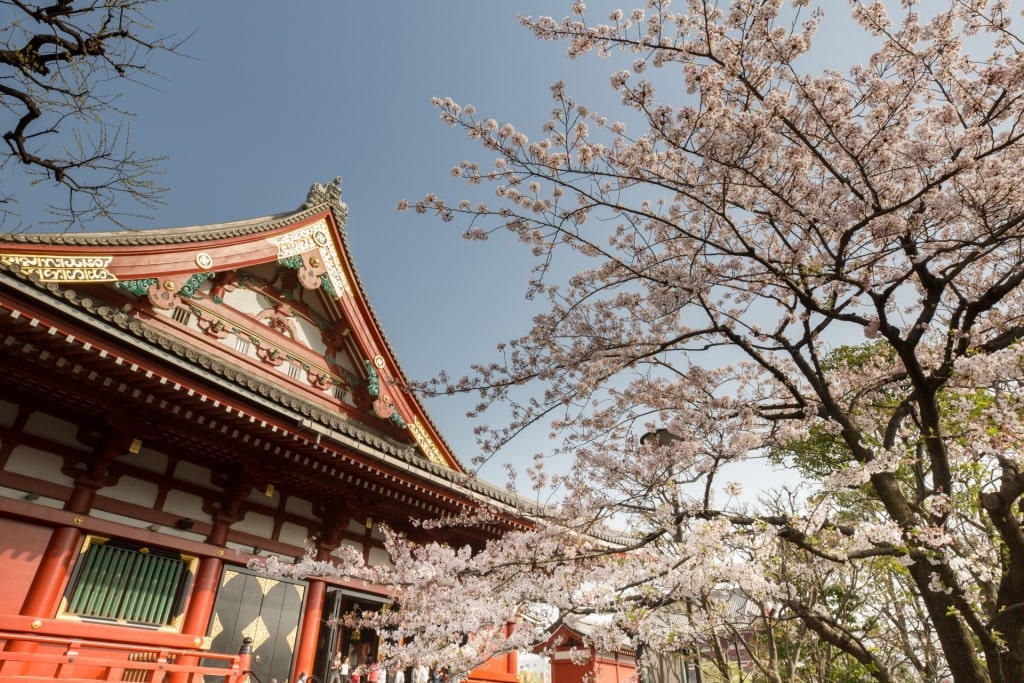
Sensoji Temple
Spring temperatures range from the high 50s up to just above 70ºF. Rain later in the season brings regular afternoon showers.
The weather is very changeable during March, but starts to become more settled for the cherry blossom season in April, when the city’s parks are packed and daily highs can reach 63°F (17°C).
Anime fans flock to the Japanese city for the annual Tokyo Anime Fair in March, while April sees the lively Hana Matsuri—celebrating Buddha’s Birthday. “Golden Week” from April 29 to May 5 packs trains, and shuts down the city.
When Is Rainy Season?
Mid June in Tokyo through late July is the rainiest time of the year. However, you won’t see rain every day, and rainfall also varies from year to year. Typical for June, though, is just over seven inches of rain, or 180mm.
Probably more difficult to deal with is the heat combined with the high humidity. The unpredictability of the weather—and the weather forecast—can also interfere with plans. Bring a folding umbrella, or buy one of the efficient Japanese ones. Then you’re ready to cope with any afternoon showers.
When Is High Season?
High season in Tokyo lasts from March until May, and is linked to the annual cherry blossom season that Japan is famous for.
Picnicking in the parks is the traditional way to celebrate Hanami (“flower watching”). While nature varies in its exact timing, the Golden Week of May is a fixed holiday time that also brings out intense crowds.
A second high season starts from late July into December, but the weather is only at its best from September. August in particular is hot and humid. September through November is perfect for fall foliage and moon-viewing parties.
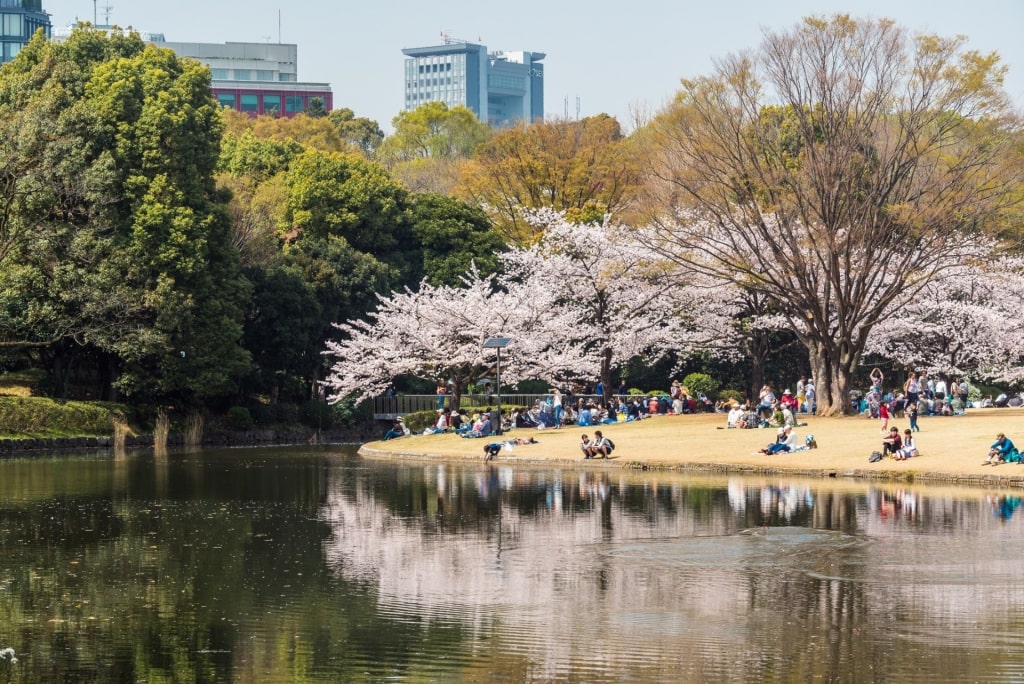
Kitanomaru Park
When Is Shoulder Season?
Tokyo is so crowded, it’s hard to really notice or define a shoulder season. Late March to early April, before the cherry blossom blooms, is perhaps the major contender. The weather is turning sunny, and the rains have yet to arrive, so it’s still a popular time to visit.
Read: Best Beaches Near Tokyo
When Is Low Season?
Winter is low season in Tokyo, particularly during January through February. However, it’s a good time to see Japanese temples lit up. The fresh snow on Mount Fuji with clear blue skies is another photographer’s delight.
Would you like to discover Tokyo’s many wonders for yourself? Then browse our cruises to Tokyo and find the perfect Asian itinerary.
